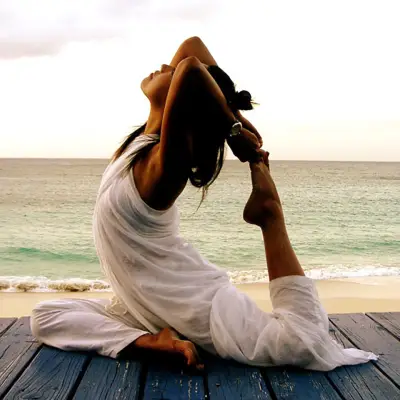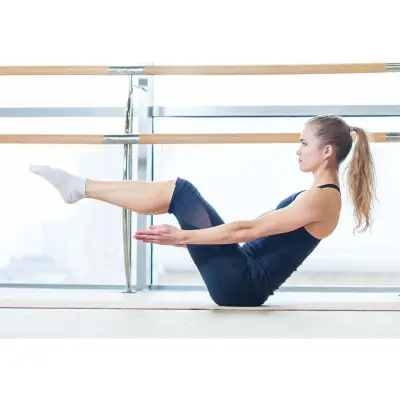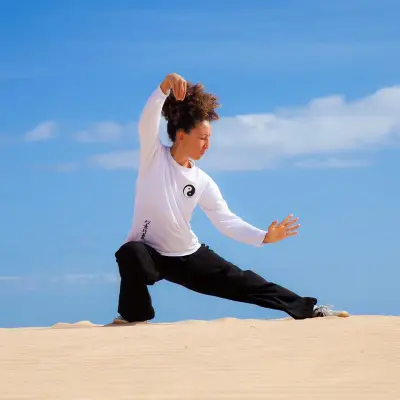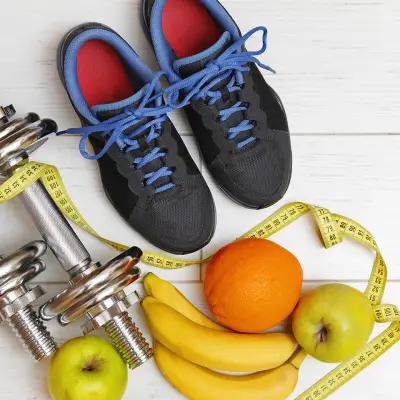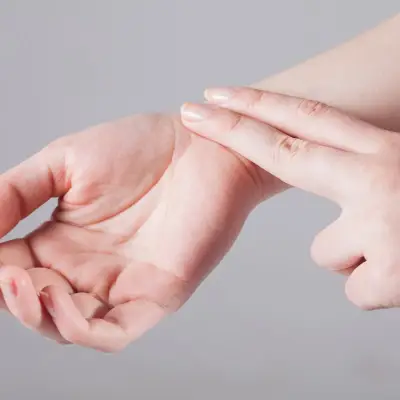Yin Yoga is a relaxing, slow-paced form of yoga that incorporates principles of traditional Chinese medicine. Its asanas, or postures as they are more commonly known, are held for longer periods of time than in other yoga styles. Advanced users may even be able to stay in one asana for five minutes or more. Just because the form of yoga is slower-paced and more relaxing does not mean that it is any less effective. Yin Yoga seeks to work deeper into our bodies with passive and longer-held poses and forms. This targets the deepest tissues, connective tissues, ligaments, joints, and deep fascia networks of our bodies.
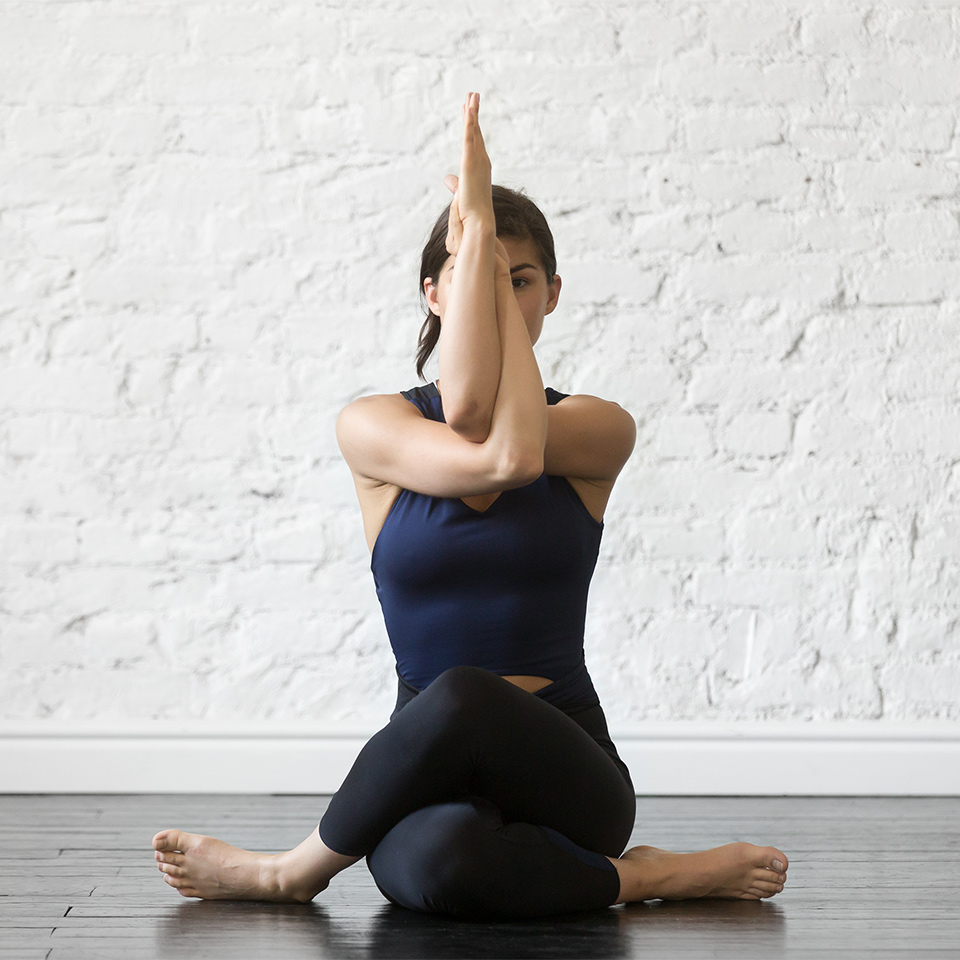
Jump to:
Yin Yoga offers many benefits, including wonderful physical and mental health benefits. In this blog, we will detail everything you need to know about this ancient Chinese practice, from its origins to what to expect from a class, where to start as a beginner, the various poses, and the overall benefits of the practice.
Yin Yoga Meaning
It is commonly believed that all things in the world must be balanced. For chaos, there must be order, and for fire, there must be ice. The idea of balance is also expertly exhibited through yoga. Yin Yoga is in direct contrast to Yang Yoga forms, such as Vinyasa yoga, which directly targets muscles and specifically aims to build strength and stimulate blood flow around the body. Meanwhile, Yin Yoga is characterised by rest, relaxation and long postural holds. Energetically, Yin Yoga aims to improve energy flow, enhancing the flow of chi around the body. If you happen to read our blog on the benefits of Gua Sha, then you will already be familiar with how chi flow is one of the most important aspects of ancient Chinese medicines. If you have not, in short, chi (or life force) flowing freely around your body allows for many different health benefits, both mentally and physically. If chi is flowing around your body freely, you are far less likely to develop a physical illness or suffer from obstacles of the mind.
Recommended for you!
Best SellersOrigins & History
Yin Yoga has quite an archaic origin. Long-held postures were used in both India’s Hatha yoga and China’s Dao Yin long before the first recorded documents referring to Yin Yoga as a practice. This highlights the practice's distinctly more Eastern influences, which slowly trickled through to various Western physical disciplines, such as gymnastics and ballet, where holding postures in long form is rather normal.
For centuries in China and Taiwan, holding stretches for long periods and other techniques closely related to Yin Yoga have been practised as part of Daoist Yoga, also known as Dao Yin. About 2000 years ago, Taoist priests taught these methods, along with breathing techniques, to Kung Fu practitioners. Taoist Yoga uses similar postures to help the body find stillness during meditation.
Paulie Zink, the American martial arts champion, introduced the practice of Yin Yoga to the Western world. He taught the practice to his students as part of his hatha instruction, and while he was accredited as the founder of Yin Yoga in the Western world, it was actually one of his students who brought it to the world stage.
Paul Grilley integrated Zink’s teachings with hatha yoga and the Chinese meridians, leading to the development of what is now known as Yin Yoga. Today, Paul Grilley and his student Sarah Powers are recognised as some of the foremost Yin Yoga instructors in the world. In today's modern world, it is not uncommon to see Yin Yoga poses flooding TikTok and Instagram feeds, as in recent years, the ancient practice has had a resurgence in popularity.
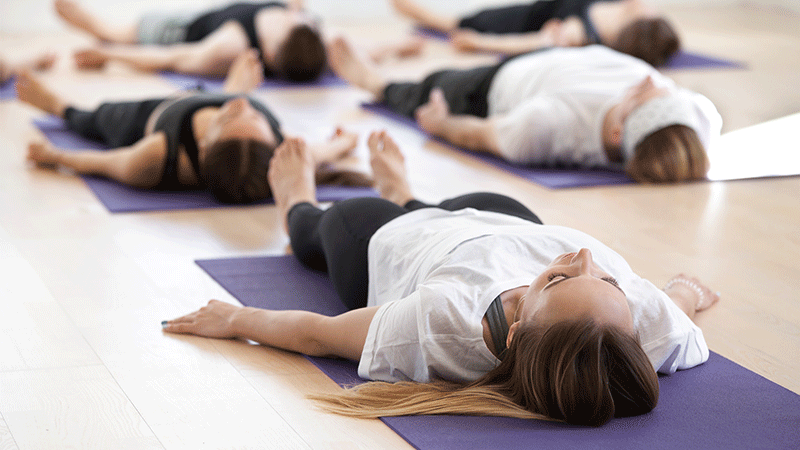
Yin Yoga for Beginners
Unlike other exercises or practices, Yin Yoga is relatively beginner-friendly. Yin Yoga is actually a great choice for newbies or individuals looking to strike a balance between their regular exercise routine and trying a new practice. Furthermore, it can actually help those who suffer from long-term injuries or chronic conditions causing pain. So, if you happen to have an injury which holds you back from performing certain exercises, then maybe Yin Yoga can help. The slow movements of the practice make it far less likely to re-aggravate existing issues or cause new ones. Fortunately, many poses can be easily modified to be more applicable to the individual's physical capabilities.
Technically speaking, all you need to get started is a yoga mat and the knowledge of poses that are within your capabilities. Many Yin Yoga practitioners prefer to perform Yin Yoga in the morning. A common pose to start with is simply positioning your feet together, with the soles of your feet touching, and lying on your back with your arms raised above your head. When in position, you must focus on your breathing, taking slow and deep breaths as you hold the pose.
The poses you incorporate into your routine are largely down to the individual, and the above pose is by no means universal. The key to finding the right pose for you is to find one that is effective whilst also feeling comfortable. Never at any point during the exercise should you feel discomfort or overexertion. Before undertaking any pose, or any other form of physical exercise for that matter, you should always ensure that the exercise is suitable for you and feels comfortable.
Who Can’t Do Yin Yoga
While Yin Yoga is generally very beginner-friendly, there are some individuals who should avoid the practice. Yin Yoga is not suitable for:
- Individuals with hypermobility problems
- Individuals who have been diagnosed with osteoporosis
- Pregnant women
If you are still unsure whether you should practise Yin Yoga, consult your GP. They can offer guidance on the exercise.
What To Expect In A Yin Yoga Class?
Yin Yoga classes usually last 60 to 90 minutes. As you may expect, they consist of a series of long-held, passive floor poses that mainly work the lower part of the body, that is, the hips, pelvis, inner thighs, and lower spine. These areas are especially rich in connective tissues. The poses are held for up to 5 minutes, but sometimes, this can be longer if the individuals are seasoned in the practice.
In some cases, the yoga teacher may suggest setting an intention before starting the session. Regardless, you may wish to set your own goal if you feel the teacher’s objective does not align with your own ambitions.
Yin Yoga is predominantly passive, though some Yin asanas incorporate Yang elements. In these poses, muscles are kept relaxed to prevent muscle spasms that could occur from prolonged muscle engagement.
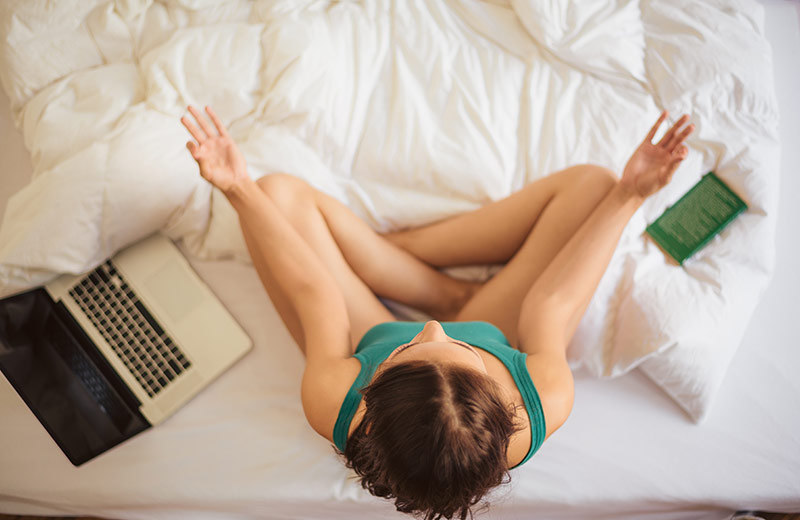
Yin Yoga Benefits
There are many benefits of Yin Yoga. Some of the benefits include:
Improved Circulation
The long-held poses of Yin Yoga stimulate blood flow, enhance circulation, and help to nourish tissues.
Increased Flexibility
Yin Yoga poses stretch deep connective tissue, thereby increasing overall flexibility.
Reduces Stress and Anxiety
The practice of Yin Yoga encourages relaxation and mindfulness, which can help to reduce stress and anxiety levels.
Enhanced Joint Mobility
The practice targets joints and ligaments, promoting a better range of motion and joint health.
Mental Clarity and Focus
The meditative aspects of Yin Yoga foster mental clarity, concentration, and inner peace.
Relaxation
Due to the mediative element of the Yin practice, including deep breathing and mindfulness approach, Yin Yoga can encourage deep relaxation and can improve sleep quality.
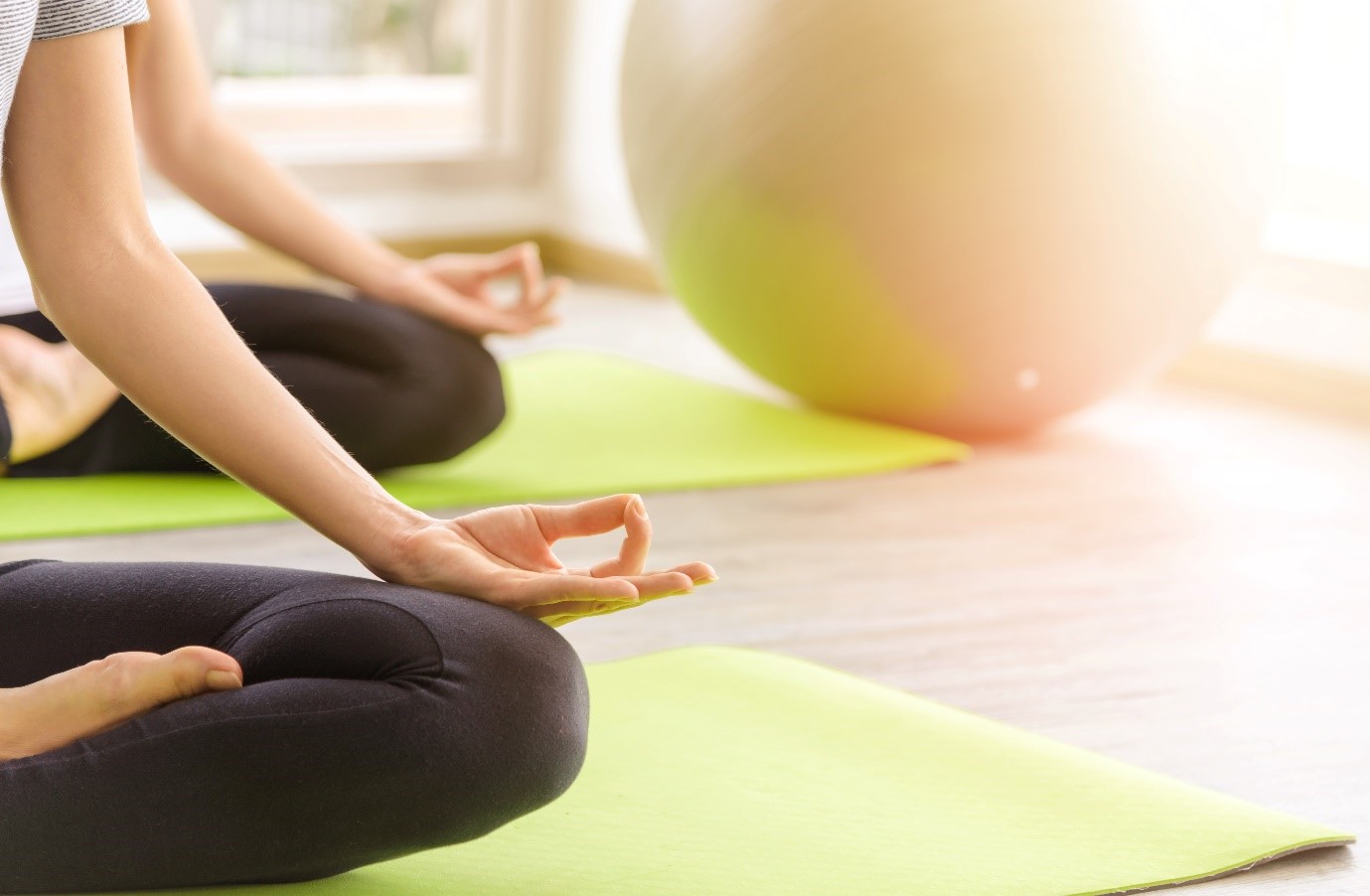
Yin Yoga Teacher Training
If you are interested in or seasoned in Yin yoga and want to share your wisdom with others, you can become a teacher through universally accepted methods of Yin yoga training.
To start, a valuable route many would-be Yin Yoga teachers decide to take is a level 3 diploma in yoga instruction or another universally recognised accreditation. On average, learning teachers spend around 3-4 months to complete a certification. However, this is only an average and will largely depend on your ability to commit to learning and the individual's prior knowledge and experience before partaking in the course. A better way to view the length of time you will learn is to see it through the lens of around 200 hours of training. After 200 training sessions, whether that be independently or as part of a recognised class, you should be in a position to conduct classes.
There is no one set route to becoming a Yin Yoga teacher, and while 200 hours is advised, many teachers actually train for 500 hours or more. The best approach to becoming a Yin Yoga teacher is to acquire a certification that is not only universally recognised but also fits perfectly around your personal life and your own ambitions.
Dangers of Yin Yoga
Generally speaking, Yin Yoga poses little risk to your physical health if done correctly. However, as with any physical exercise, there are certain risks and dangers.
Stress on the Pelvis and Hips
Long-held Yin Yoga poses can put significant stress on the hips and pelvis, and too much stress could destabilise the pubic symphysis or sacroiliac joints. As such, you should avoid holding long and deep holds which you feel cause you discomfort.
Muscle Weakness
Yin Yoga emphasises passive stretching and does not actively engage the muscles. Practising it exclusively, without incorporating muscle-strengthening exercises, could result in muscle weakness or imbalance.
Aggravating Existing Conditions
While Yin Yoga can be fine if you have a preexisting condition, it can still aggravate it. Individuals with existing conditions should use the practice cautiously and follow the correct practices laid out by seasoned professionals. Some poses can worsen injuries, especially those related to the spine, hips, or knees.
Incorrect Instruction
Because Yin Yoga seems so easy to learn, the internet is flooded with inadequate instructions from supposed experts on how to practice it. Practising Yin Yoga without proper guidance or with an inexperienced instructor can elevate the risk of injury. Experienced teachers can offer essential modifications and support, ensuring a safe and beneficial practice.
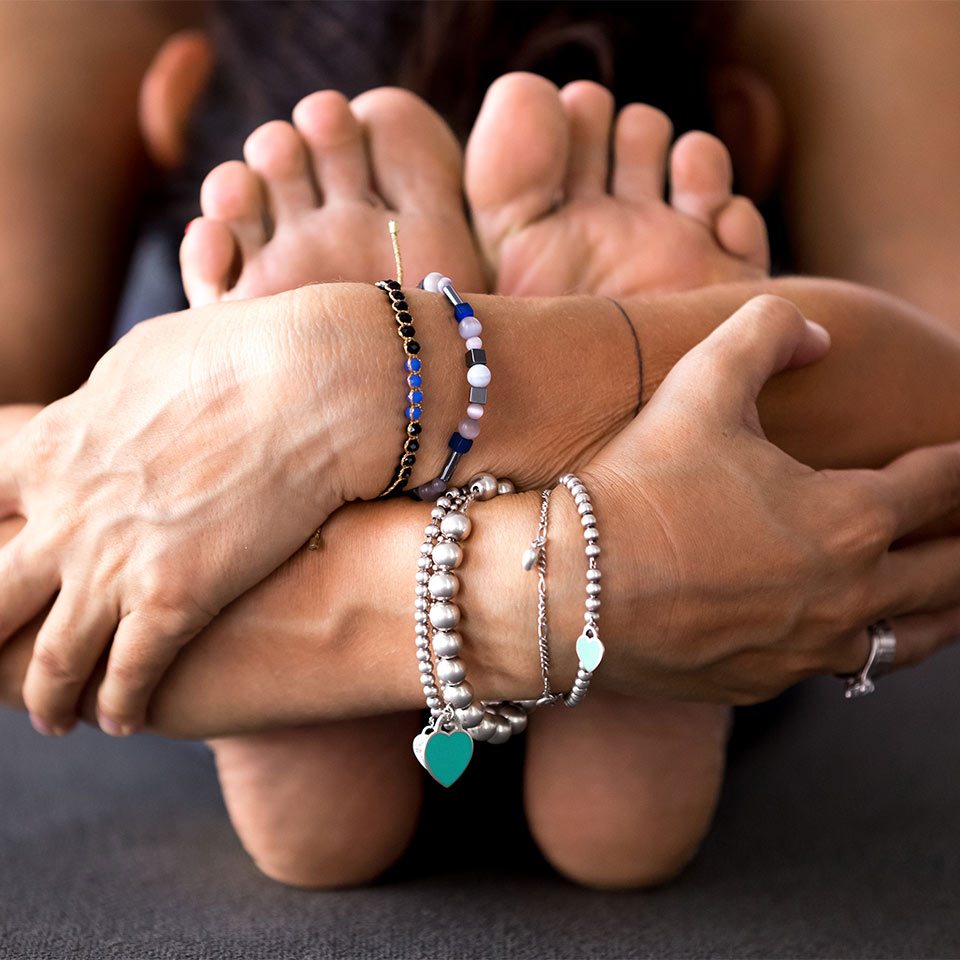
What Are The 26 Yin Yoga Poses?
If you are going to perform a Yin Yoga sequence, the chances are you will have heard of the 26 Yin Yoga poses. While there are numerous intricacies to these poses, we will do our best to summarise them and provide a brief guide on how to perform the 26 most common poses.
Dragon Pose
Perhaps the most popular is the dragon pose in Yin Yoga, and a staple of many yoga routines. To perform the pose, you must perform a low lunge with the back knee to the ground.
Dragonfly Pose
While it may share a similar name to the dragon pose, the dragonfly pose is vastly different. To perform this pose, sit with your legs spread wide apart and fold forward.
Butterfly Pose
Sit with the soles of your feet together and let your knees drop out to the sides. The butterfly pose is very popular and has many variants.
Caterpillar Pose
To perform, sit with your legs extended straight in front and fold forward. From the side, it may look like you are simply bending forward with your legs spread straight out.
Frog Pose
If you were to look at someone performing the frog pose, you would understand why it is called so. To execute this pose, start on your hands and knees, then spread your knees wide apart.
Happy Baby Pose
Lie on your back and hold the feet with your hands and knees bent. When performing this pose, it may look like you are about to perform a teddy bear roll.
Half Butterfly Pose
Sit with one leg extended and the other foot tucked to the inner thigh. As its name suggests, this pose is basically half of the previously mentioned butterfly pose.
Melting Heart Pose
Arguably the most interestingly named pose on this list. To perform the melting heart pose, start on your hands and knees and lower your chest towards the ground. From the side, your body should look like a half-melted heart.
Saddle Pose
The saddle pose requires relatively flexible muscles, so it is not beginner-friendly. To perform it, sit between the heels and lean back to open your body and mind.
Sphinx Pose
Lie on your stomach and prop your upper body on the forearms. This pose may look simple, but is actually quite effective. It should be significantly easier to hold for a longer duration than the saddle pose.
Seal Pose
Lie on your stomach, arms extended in front, and lift your chest. Again, this pose may require a certain level of flexibility.
Shoelace Pose
Sit with your legs crossed, one knee stacked on top of the other, so your legs look like shoelaces.
Snail Pose
Lie on your back and lift your legs overhead, touching your feet to the ground behind your head. Before performing this pose, ensure you are comfortable and at the appropriate skill level.
Square Pose
Sit with your shins stacked on top of each other so your knees are squared.
Swan Pose
From your hands and knees, slide one knee forward and extend the other leg back so you start to look like an elegant swan from the side.
Reclining Twist
To perform the reclining twist, lie on your back and twist your lower body to one side.
Banana Pose
Lie on your back and arch your body into a crescent shape. From an aerial view, the pose looks like a banana.
Deer Pose
Sit with one of your legs in front and the other bent behind.
Puppy Pose
Despite its rather adorable naming convention, this pose can be extremely effective at relieving stress and tension. From your hands and knees, walk your hands forward and lower your chest.
Child's Pose
Don’t let the name fool you; this pose is extremely effective. To perform, sit on your heels and fold forward with your arms extended or by your side.
Thread the Needle Pose
Slide one arm under your body, from your hands and knees and rest your shoulders on the ground.
Toe Squat
As you may have noticed from its name, the toe squat can be quite intense. To execute, sit back on your heels with your toes tucked under.
Dragonfly Twist
Sit with your legs spread wide and twist the upper body.
Twisted Roots
Lie on your back, cross one leg over the other, and twist as the pose’s name suggests.
Windshield Wipers
Potentially the most unusually named pose to perform. Lie on your back, bend your knees, and drop them side to side so your legs look like windscreen wipers.
Reclining Butterfly
Lie on your back with the soles of your feet together, and your knees dropped to the side.
Learn More About Yin Yoga from Centre of Excellence
If you want to learn more about Yin Yoga, including how to perform the various poses, the history of the practice and some of the other benefits, then why not enrol in our accredited Yin Yoga diploma today? You can have lifetime access to this insightful course for just £29 (instead of the original £127). So what are you waiting for? Enrol today!

